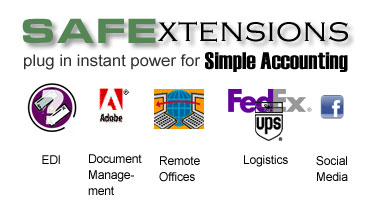This report prints a comprehensive list of all sales and taxes due for a range of sales orders. This is used to fill out each of the appropriate forms for each Sales Tax Entity. If a line item on a sales order is assigned a Sales Tax ID with multiple entities, then the amount of that line items sales and its tax for that entity will appear on the report under each entity to which it belongs.
Theory
Sales Tax IDs are assigned to the Site for each line on a Sales Order. And, as discussed in the section on Sales Tax IDs, each Sales Tax ID can contain many sales tax entities(such as city, county and state), each with their own percentage and G/L posting account. This is to accommodate those states that collect more than one type of sales tax per invoice. With this scheme you might have dozens of Sales Tax IDs, one for each combination of entities.
But when filing and paying your sales taxes you need a way to total up sales by entity, not necessarily by Sales Tax ID. That’s where this report comes in: The Sales Tax Entity Detail Report uses records from a query of sales orders and creates a report with one record for each invoice and sales tax entity.
If a Sales Tax has three entities (City, State, County), each line item from the Sales Order will appear three times on the report: once for the City entity, once for the State entity and once for the County entity. The tax shown at the right of each column will indicate the tax collected for that entity not the total tax collected for the line item.
STATE OF MICHIGAN’ 4.6%
‘WAYNE COUNTY’ 2.0%
CITY OF DETROIT’. 1.0%
On the Sales Tax Entity Detail Report, the $100.00 will appear under each of the above entities as follows:
Smith Bros. $100.00 4.6% $4.60 Tax
Smith Bros. $100.00 2.0% $2.00 Tax
Smith Bros. $100.00 1.0% $1.00 Tax
Nowhere on the report will you see something like the following:
Smith Bros. $100.00 7.6% $7.60 Tax
…because even though the total tax you collected was $7.60, this report is not concerned with that fact; it is only concerned with showing the tax collected for each entity.
To report the just total sales tax collected for any Sales Order, or Sales Order Line Item see the topic on Sales Order Reports.
TAXABLE VERSUS NONTAXABLE SALES
There are three Sales columns at the right side of the report:
- Sales+Freight+Art The total sales of the line item in that entity upon which tax is calculated.
The Freight and Art charged to the customer may or may not be included, depending on the settings TAX FREIGHT and TAX ART set for the Sales Tax ID.
- Taxable Sales Sales for which the sales tax entity had a percentage, so some tax was calculated.
- Nontaxable Sales Sales for which the sales tax entity had no percentage, so no tax was calculated.
Sales appear either in the Taxable column or in the Nontaxable column, but not both. This provides totals of all sales subject to tax, versus sales not subject to tax.
1) Go to the Sales & A/R menu and select Sales Tax, then Sales Tax Detail Report
2) Select which records to view using the filter portion of the Query Window:
· Enter > and 01/01/96 in the first PAYMENT DATE field.
· Enter < and 01/31/96 in the second PAYMENT DATE field.
· Enter Y in the PAID IN FULL? field to view only closed invoices.
3) Press the [Proceed] button.
You now have a report showing a break down of all the invoices that were assigned to each sales tax entity. So if you collect more than one tax on each invoice (for example a state and a city tax), each invoice will appear more than once, once for each entity to which it was assigned by the Sales Tax ID. Refer to the sample in the REPORTS section to get a better understanding of how this works.
If you select Employee ID as your primary sort, a subtotal and page break are automatically generated for each Employee ID. In effect, giving you a separate sales tax entity detail report for each Salesperson. This can be extremely useful for salespeople who operate as independent contractors.



